Archaeologists have discovered what may be the oldest signs of human habitation on Sligo’s Coney Island.
A box-like structure built from large stone slabs was excavated over two days last week. It had been known to residents of the island for over 40 years but has been repeatedly covered by sands, then exposed by high tides, only later to be hidden again. Locally, the site had been called ‘the Sailor’s Grave’ as it resembles a grave.
But when Ciarán Davis of Rosses Point, an archaeology student at I.T. Sligo, saw the structure he recognised it as an archaeological site. Ciarán reported the find to the National Museum of Ireland in Dublin and in a matter of days the Director of Irish Antiquities, Éamonn Kelly, was on Coney to carry out a rescue excavation.
The purpose of the excavation was to determine the date of the archaeological remains and the type of activities they represented. Mr. Kelly and Erin Gibbons carried out the archaeological excavation in collaboration with I.T. Sligo archaeology lecturers Dr. Marion Dowd and Dr. James Bonsall, as well as Ciarán Davis, Rory Connolly and Alan Healy – archaeology students at the college. Dr. Bonsall carried out a geophysical survey around the site to establish if any associated archaeological remains lay beneath the sands.
The team revealed that the stone structure had been well-built on an ancient beach surface. It does not appear to have been a grave, as the local name suggested. Burnt and heat-shattered stones and charcoal found inside the structure indicated something different.
“Until we get a radiocarbon date from the charcoal, we cannot be sure how old the site is. But at the moment, we think this is the trough of a fulacht fiadh” explained Dr. Dowd. A fulacht fiadh is a prehistoric trough or pit that was dug into the ground and filled with water. Stones were then heated on an outdoor hearth and added to the water to bring it to the boil. The hot water could then be used for cooking, bathing, washing, dyeing textiles or brewing alcohol. The vast majority of fulachtaí fiadh in Ireland date to the Bronze Age, effectively between 4,000 and 2,500 years ago.
The discovery is exciting, not least because it seems to be the oldest known signs of human activity on Coney Island. Current results suggest that Bronze Age people, who must have lived in the area, built the stone trough on the beach, filled it with sea water, and used the hot water for cooking, washing or other such activities.
“The residents of the island are very interested in the discovery. It tells us that people walked the beach here 3,000 or 4,000 years ago, searched for large stone slabs, and carefully built this structure. Many other archaeological sites probably await discovery on Coney” said Ciarán Davis.
The excavation was facilitated by Daryl Ewing of Sligo Boat Charters who supplied the boat for the archaeological team between Rosses Point and Coney Island.
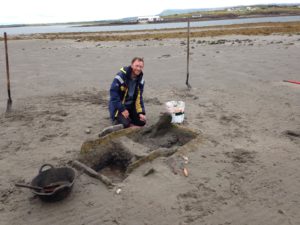
IT Sligo Archaeology student, Ciarán Davis,
who made the discovery on Coney Island
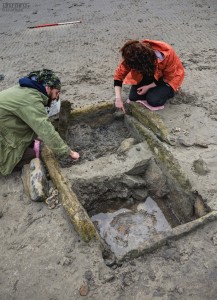
Excavation work on Coney Island
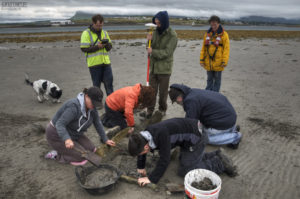
IT Sligo student Ciarán Davis and the Archaeology team,
which conducted the excavation on Coney Island
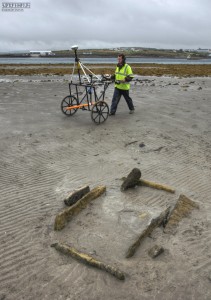
Dr James Bonsall conducts a geophysical
survey at the site on Coney Island
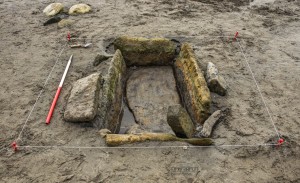
The box-like structure built from large stone slabs
which was excavated on Coney Island.